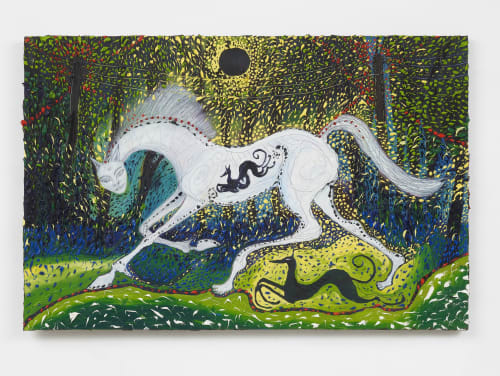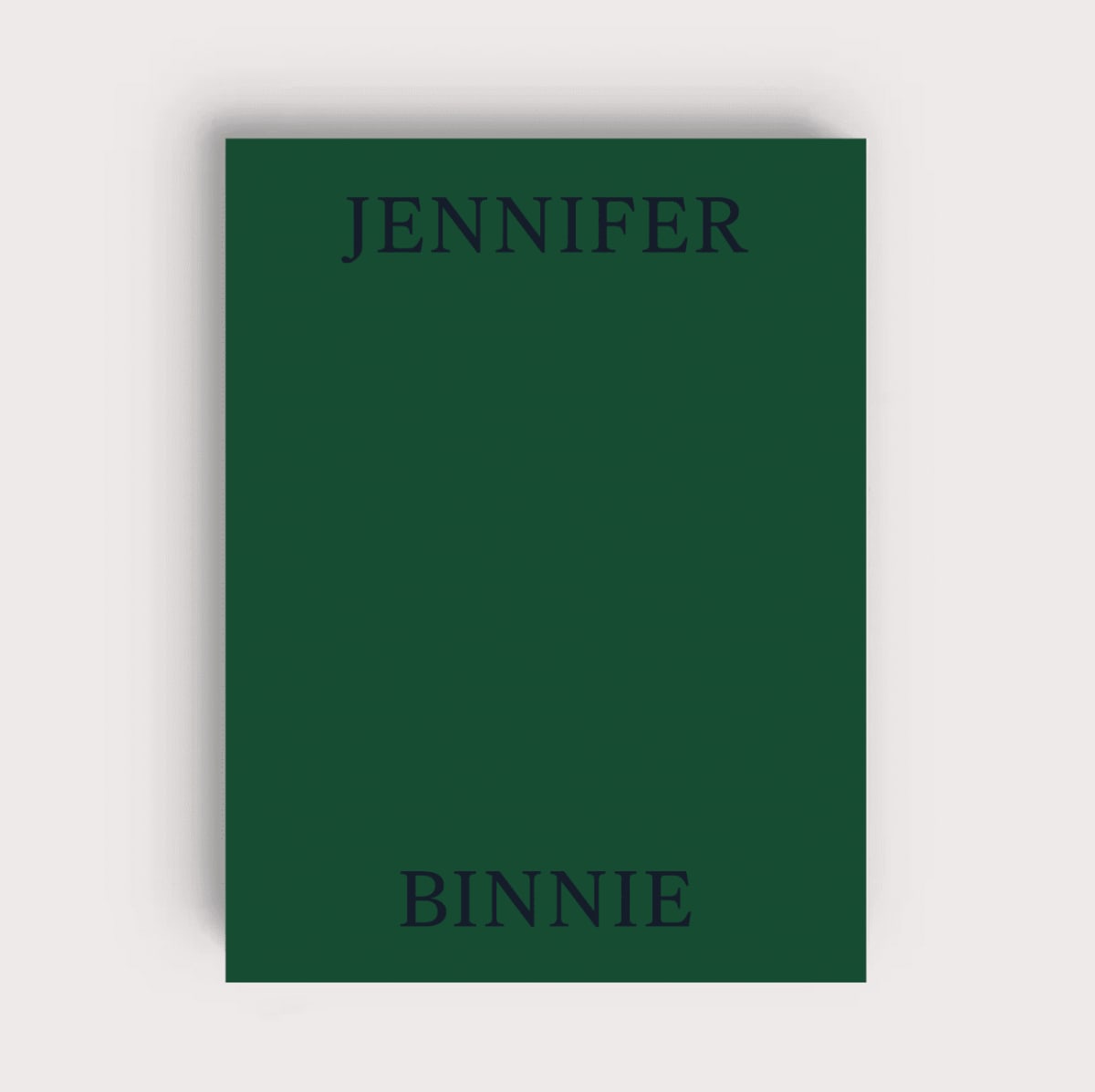Jennifer Binnie: Forest Visions
Opening: Tuesday, 14 January | 6–8pm
In-converation with Jennifer Binnie and Jennifer Higgie: Saturday, 1 March | 3–5pm | FULLY BOOKED
"The co-existence of animals, humans, and nature is the thread that connects Binnie’s work." — Jennifer Higgie
"We require each other in unexpected collaborations and combinations, in hot compost piles. We become-with each other or not at all." — Donna J. Haraway
Richard Saltoun Gallery presents British artist Jennifer BINNIE’s (b.1958) inaugural solo exhibition with the gallery. Forest Visions spans paintings and works on paper from the 1980s to the present day, celebrating over four decades of Binnie’s pioneering practice that converges influences from folklore, spirituality, feminism, and ecological thought.
This exhibition follows Binnie’s recent inclusion in major institutional shows such as Women in Revolt! Art and Activism in the UK 1970-1990 at Tate Britain, now touring at the National Galleries of Scotland (2024/25), and RE/SISTERS: A Lens on Gender and Ecology at the Barbican Centre (2024).
Jennifer Binnie emerged as a pivotal figure in British art during the early 1980s, as co-founder of the Neo Naturists, an important performance art group formed in 1981 with her sister, Christine Binnie, and Wilma Johnson. Rooted in the subculture of the New Romantic club scene, the Neo Naturists developed amid the transformative economic, political, and social shifts of the era.
Binnie’s distinctive solo practice developed in parallel, as she started exhibiting her paintings with gallerist James Birch in London from the 80s onwards, garnering critical praise from influential critics such as Louisa Buck. Her artistic language has since developed around a persistent exploration of dissolving hierarchies between the human and non-human; her paintings depict mysterious forests humming with unseen energies; animals acting as guides and companions; and human figures merging with trees and landscapes, suggesting a shared life source.
Drawing on a range of influences from prehistoric cave paintings to the performance art of Helen Chadwick and Bruce Lacey, Binnie’s practice defies linear interpretation, operating instead through symbols, metaphors, and intuition. Donna Haraway’s ecofeminist philosophy, which challenges patriarchal hierarchies and insists on “becoming-with” the natural world, resonates deeply within her work. Her recurring motifs—deer, foxes, and radiant, archetypal women—capture the interconnectedness of all life forms, a theme echoed in the simple red hearts she paints on human and non-human figures alike. She explains that “it’s the connection between the beating heart of life that’s in both.”
In this exhibition, Binnie’s enduring meditations on humanity’s relationship to the natural world unfold across a selection of key paintings, which blend personal autobiography with fictional and symbolic narratives. In their colour palette, they are bold and thrilling, mixing earthy colours with dramatic jewel tones, and employing rich, textural oil paint.
The monumental The Hunter’s Barrow (1982), the earliest work in the exhibition, is rooted in Binnie’s childhood memories of an ancient burial mound near her home in East Sussex. The painting depicts a male figure—modeled on the artist’s then-partner, Grayson Perry—floating horizontally in a liminal space that simultaneously evokes an underground cave or cocoon, and a grave or womb. This work reflects on themes of transformation, rebirth, and the cyclical nature of existence, grounding her work in both personal and historical landscapes.
The painting Gamekeeper with Dying Doe and Hound (2021) explores similar ideas of change, life and death. Beneath a towering canopy of forest trees—a recurring motif in the artist's work that emphasizes the vastness of nature in contrast to human scale—, a seated female figure is flanked by a doe and a hound, animals symbolically associated with themes of vulnerability and mortality throughout mythology. Red fluid appears to seep from the woman’s body into the earth; a visual element that can be interpreted as life force, menstrual blood, or energy returning to the natural world.
Paintings such as Man and Woman (1983), which were exhibited in Tate Britain’s Women in Revolt!, exemplify her characteristic use of flowing patterns, vibrant colors, and symbolic forms to animate the human body, suggesting an internal, spiritual energy source that transcends the purely physical. This motif is echoed in her later small paintings on board from 2022.
In Fox Woman (2013), Binnie fuses human and animal bodies into a powerful totemic female figure. The woman in a radiant yellow dress with the head of a fox symbolizes transformation, instinct, and wisdom. Although often using her own body as a reference, the artist is ultimately more interested in portraying a female archetype than a specific individual.
In the timeless realm of Jennifer Binnie’s Forest Visions, myth, ritual, and human and non-human life converge. This exhibition at Richard Saltoun Gallery traces the full scope of the artist’s practice, which continues to challenge the divisions and hierarchies between us and nature, offering deeply personal reflections on humanity’s place within the ecological web.
In the press:
Jennifer Binnie: Mythology, Feminism and Nature in British Art Contemporary Art Society
For press enquiries, please email sonja@richardsaltoun.com
For sales enquiries, please email sales@richardsaltoun.com






















